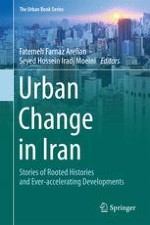2016 | OriginalPaper | Buchkapitel
2. The Role of Qanat and Irrigation Networks in the Process of City Formation and Evolution in the Central Plateau of Iran, the Case of Sabzevar
verfasst von : Hassan Estaji, Karin Raith
Erschienen in: Urban Change in Iran
Aktivieren Sie unsere intelligente Suche, um passende Fachinhalte oder Patente zu finden.
Wählen Sie Textabschnitte aus um mit Künstlicher Intelligenz passenden Patente zu finden. powered by
Markieren Sie Textabschnitte, um KI-gestützt weitere passende Inhalte zu finden. powered by
